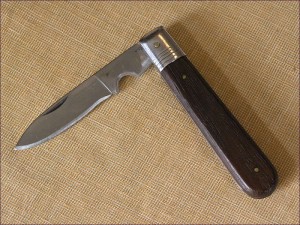Difference between spasticity and rigidity
Pocket knife – more force has to be applied in the initial phase of opening – as in clasp knife spasticity
Spasticity and rigidity are 2 types of hypertonic states elicited when examining the tone of limbs. It is important to differentiate between them to arrive at a correct diagnosis.
Spasticity:
- Seen in pyramidal tract lesions
- Classically termed ‘Clasp knife spasticity’ – more tone during the initial part of movement – as in opening a pocket knife
- It is velocity dependant – should be elicited by fast movement of the muscle groups involved
Rigidity:
- Seen in extrapyramidal lesions – like parkinsonism
- 2 subtypes
- Cog wheel rigidity – Tremor superimposed on hypertonia – resulting in intermittent increase in tone during the movement – felt as jerks
- Lead pipe rigidity – Uniform increase in tone
- Velocity independent – does not vary with speed of movement of muscle groups involved
Image credits: Matěj Baťha
9 Comments




This is indeed of great importance nd usefully to me as an occupational therapist in training
ultimate
Spasticity involves only 1 muscle group e.g. Flexors
Rigidity involves both muscle groups at a time e.g. Flexors and extensors
Useful information..like it
Very useful
Very useful and precise
Nice
according to snell’s neuroanatomy, spasticity is seen in extrapyramidal tract lesions
Spasticity involves both flexors n xtensors